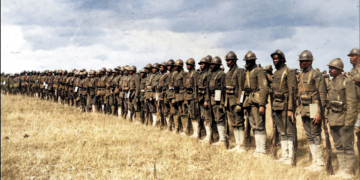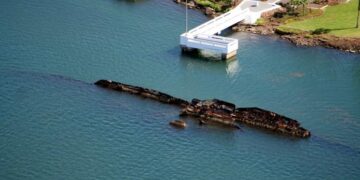June 7, 2025 Story by: Publisher
This article has been updated to include a letter sent to Secretary of Defense Pete Hegseth from the Legal Defense Fund.
In a move that has sparked significant controversy, the U.S. Navy is set to rename the USNS Harvey Milk, a fleet replenishment oiler named after the slain gay rights leader and Navy veteran.
This decision is part of a broader initiative to review and potentially rename other naval vessels honoring prominent civil rights figures, including Harriet Tubman, Medgar Evers, Sojourner Truth, Thurgood Marshall, Ruth Bader Ginsburg, Cesar Chavez, Dolores Huerta, and Lucy Stone.
The directive, issued by Defense Secretary Pete Hegseth, aligns with the Trump administration’s emphasis on reinstating a “warrior culture” within the military. An internal memo obtained by CBS News outlines the proposed timelines for the renaming process, with the announcement for the USNS Harvey Milk expected by June 13, coinciding with Pride Month.
Harvey Milk, the first openly gay man elected to public office in California, served in the U.S. Navy during the Korean War era. He was forced to resign in 1954 due to his sexual orientation, receiving an “Other Than Honorable” discharge. Milk was assassinated in 1978 while serving on the San Francisco Board of Supervisors. The USNS Harvey Milk was christened in 2021, symbolizing a step toward inclusivity within the armed forces.
The Legal Defense Fund sent a letter to U.S. Secretary of Defense Pete Hegseth categorically opposing the to the U.S. Department of Defense’s (DOD) reported intentions to remove the names of civil and human rights icons—including Supreme Court Justices Thurgood Marshall and Ruth Bader Ginsburg, Harriet Tubman, Medgar Evers, and Harvey Milk—from vessels in the John Lewis-class fleet oiler replenishment program.
“Such erasure would represent a profound act of disrespect, not only to these Americans and their historic contributions, but to the very principles of equality and justice they each arduously fought to advance. These names were not chosen as mere symbolic gestures. Rather, they were earned through service and sacrifice to this country—under the threat of burning torches, through sheer perseverance in
the face of racial and gender barriers, and through extraordinary and courageous efforts that reshaped the moral, legal, and democratic fabric of our nation.”
The Navy has not yet disclosed the new names for the vessels under review. The decision to rename these ships marks a significant shift in the military’s approach to honoring individuals who have contributed to civil rights and social justice in the United States.
John Lewis-class replenishment oilers
The John Lewis-class replenishment oilers (T-AO 205) are the U.S. Navy’s latest class of fleet oilers, designed to replace the aging Henry J. Kaiser-class tankers. These ships are operated by the Military Sealift Command and play a crucial role in providing underway replenishment of fuel and limited dry cargo to U.S. Navy carrier strike groups, amphibious ready groups, and other surface forces, enabling sustained operations worldwide.
While primarily designed for logistical support, the John Lewis-class oilers incorporate several features to enhance survivability:
- Double-Hull Design: Provides increased protection against damage and reduces the risk of oil spills.
- Self-Defense Systems: Equipped with crew-served weapons operated by embarked Navy Expeditionary Security Teams, an advanced degaussing system, and the AN/SLQ-25 Nixie torpedo countermeasure system.
- Future Upgrades: Designed with space, weight, and power reservations for potential installation of additional self-defense systems, such as the Close-In Weapon System (CIWS) or SeaRAM.
The class is named after civil rights leader and U.S. Representative John Lewis, reflecting the Navy’s tradition of honoring prominent American figures.
The John Lewis-class oiler program represents a significant investment in the Navy’s logistical capabilities:
- Program Initiation: The Navy awarded the initial contract for the first six ships in June 2016.
- Construction Milestones: Construction of the lead ship, USNS John Lewis (T-AO 205), began in September 2018.
- Operational Testing: Between April and November 2024, the Navy’s Operational Test and Evaluation Force conducted Initial Operational Test and Evaluation (IOT&E) aboard USNS Harvey Milk (T-AO 206), demonstrating the class’s capability to deliver fuel and cargo, including vertical replenishment with multiple aircraft types.
- Future Plans: The Navy expects to complete IOT&E for the class in early fiscal year 2025 and has plans to continue expanding the fleet to enhance global operational reach.
The John Lewis-class replenishment oilers are a critical component of the U.S. Navy’s strategy to maintain a forward-deployed presence and ensure sustained operations across the globe. Their advanced design and capabilities represent a significant upgrade over previous classes, aligning with modern naval requirements
Source: CBS News / John Lewis-Class Fleet Replenishment Oiler

















